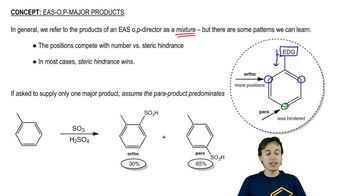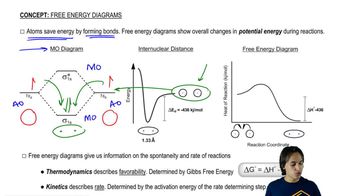Multiple Choice
Based on the resonance contributors, which atom is most likely to react with an acidic proton, H+?


 Verified step by step guidance
Verified step by step guidance Verified video answer for a similar problem:
Verified video answer for a similar problem:



 3:34m
3:34mMaster The rules you need for resonance: with a bite sized video explanation from Johnny
Start learning